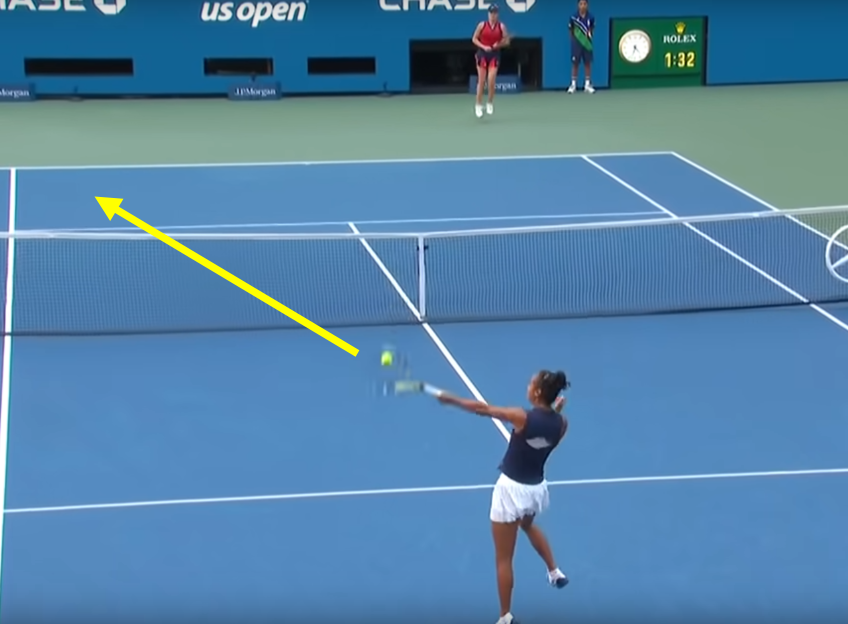When it comes to tennis, the volley is a crucial skill that can significantly enhance your overall game. Mastering the art of the tennis volley requires a combination of technique, precision, and strategic shot selection. In this comprehensive guide, we will explore the various aspects of the tennis volley, from understanding the different types of volleys to providing drills and tips for improvement, this article will equip you with the necessary strategies and tips for a stronger performance on the court.
Table Of Contents
- 1. Understanding the Tennis Volley: An Essential Shot in Your Arsenal
- 2. Perfecting Your Tennis Volley Grip: The Key to Control and Power
- 3. Exploring Different Volley Types: Enhancing Your Shot Selection
- 4. Mastering the Forehand Volley: Techniques and Drills for Success
- 5. Unleashing the Backhand Volley: Tips and Exercises for a Solid Stroke
- 6. Decoding the Half Volley: Techniques and Strategies for Challenging Shots
- 7. Mastering the Drop Volley: Adding Finesse to Your Shot Repertoire
- 8. Fine-Tuning Your Volley Technique: Fundamentals for Consistency and Accuracy
- 9. Feeling Confident in Your Tennis Volley Shot: Mental Strategies for Success
1. Understanding the Tennis Volley: An Essential Shot in Your Arsenal
The tennis volley is often regarded as one of the most crucial shots in the game. It involves hitting the ball before it bounces on your side of the court, typically at or near the net.
One of the primary reasons the volley is considered a critical shot is its ability to put you in control of the point. By intercepting the ball early, you can take away your opponent’s time to react and dictate the direction and pace of the rally. This offensive advantage allows you to apply pressure, forcing your opponent into defensive positions and making it harder for them to execute their shots effectively.

2. Perfecting Your Tennis Volley Grip: The Key to Control and Power
The Continental grip, a commonly used grip for the tennis volley, offers versatility and adaptability. It entails placing the base knuckle of your index finger on the third bevel of the racket handle, providing players with the ability to execute both forehand and backhand volleys with ease and make quick grip adjustments when necessary.
It enables you to execute both forehand and backhand volleys with ease, as well as make quick grip adjustments when needed. With the Continental grip, you can generate solid control and precision in your volleys, making it a popular choice among many players.
In addition to the Continental grip, the Eastern grip is another commonly employed technique for volleys. With the Eastern grip, the base knuckle of your index finger is positioned on the second bevel of the racket handle. While it is primarily associated with groundstrokes, certain players have found it effective for volleys too. Notably, the Eastern grip provides added stability and power. If you desire a forceful and aggressive style of play at the net, experimenting with the Eastern grip could prove beneficial in generating increased pace and depth in your volleys.
3. Exploring Different Volley Types: Enhancing Your Shot Selection
- Punch Volley: The punch volley is a decisive and aggressive shot that aims to put away the ball with power and speed. It involves a short backswing and a quick, compact punch-like motion to strike the ball forcefully. The punch volley is effective when you want to take control of the point, apply pressure, and finish off a weak or short ball from your opponent.
- Swinging Volley: The swinging volley is a versatile shot that combines the techniques of a groundstroke and a volley. It involves a longer backswing and a smooth, controlled follow-through, similar to a groundstroke. The swinging volley allows for more topspin and depth, making it effective for handling high balls or defensive shots. It provides you with better control and placement, enabling you to redirect the ball with precision.
- Drop Volley: The drop volley is a finesse shot that involves gently and skillfully redirecting the ball over the net with minimal pace. It requires delicate touch and impeccable timing to execute. The drop volley is useful when your opponent is positioned far behind the baseline, and you want to add variation and disguise to your shots. It can catch your opponent off guard and force them to cover more ground.

By incorporating these different volley types into your game, you expand your shot selection and create opportunities to disrupt your opponent’s rhythm. Each volley type has its own advantages and applications, allowing you to adapt your game to different situations on the court. Experiment with these variations during practice sessions and observe how they can enhance your overall performance.
4. Mastering the Forehand Volley: Techniques and Drills for Success
The forehand volley is a fundamental shot that every tennis player should master. It allows you to take control of the net, intercept incoming shots, and dictate the flow of the game. To achieve a strong forehand volley, it’s essential to focus on proper technique, footwork, and body positioning.
- Technique:Start with a continental grip, where the base knuckle of your index finger rests on the third bevel of the racket handle.
Position yourself close to the net with knees slightly bent, maintaining a balanced stance.
Keep your racket head up and prepare early as you anticipate the incoming shot.
As the ball approaches, step forward with your lead foot and extend your arm, meeting the ball in front of your body.
Maintain a firm wrist and use a short and compact swing, directing the ball back over the net with precision and control. - Footwork: Focus on quick and efficient footwork to position yourself for the forehand volley.
Split-step just before your opponent makes contact with the ball to ensure you’re ready to react and move swiftly.
Take a small step forward with your lead foot as you prepare to hit the volley. This helps generate power and maintain balance. Use small adjustment steps as needed to position yourself optimally for each shot. - Body Positioning: Maintain a relaxed upper body and a slightly forward-leaning posture. Keep your eyes on the ball, maintaining focus and anticipation. Position your non-racket hand slightly forward for better balance and stability. Bend your knees to create a strong base and facilitate smooth movement.

Drills for Improvement:
- Wall Volley Drill: Stand near a wall and practice hitting volleys against it. Focus on maintaining a compact swing, precise control, and consistent contact. This drill helps improve your timing, hand-eye coordination, and accuracy.
- Two-Person Volley Drill: Partner up with another player and engage in a volley rally at the net. Start with slow and controlled exchanges, gradually increasing the pace and intensity. This drill enhances your reflexes, volley technique, and ability to maintain consistency under pressure.
- Target Volley Drill: Set up targets on the court, such as cones or markers, and aim to hit your volleys within those designated areas. This drill improves your shot accuracy and helps you develop a better sense of shot placement.
By focusing on proper technique, footwork, and body positioning, along with consistent practice of these drills, you’ll be well on your way to mastering the forehand volley.
5. Unleashing the Backhand Volley: Tips and Exercises for a Solid Stroke
The backhand volley is a crucial shot that can give you an edge on the tennis court. Whether you’re intercepting a low volley or responding to a cross-court shot, a strong backhand volley can make a significant difference in your game.
- Grip: Start with a continental grip, similar to the grip used for the forehand volley.
- Footwork: Footwork is crucial for a successful backhand volley. Position yourself with your feet shoulder-width apart, knees slightly bent, and body weight balanced.
- Follow-through and Finish: When executing the backhand volley, keep your wrist firm and your racket head slightly open to ensure proper control and direction.
Maintain a compact swing, focusing on a short backswing and a forward follow-through.

6. Decoding the Half Volley: Techniques and Strategies for Challenging Shots
The half volley is a demanding shot in tennis that requires precise timing and skillful execution. It occurs when you hit the ball immediately after it bounces off the ground, typically near your feet or ankle level.
- Preparation and Anticipation: Anticipate the half volley by recognizing the trajectory and speed of the oncoming shot. This early anticipation allows you to position yourself optimally and react swiftly.
Maintain a low, athletic stance with your knees flexed, ensuring that you are balanced and ready to move quickly.
Keep your racket prepared and held slightly in front of your body, positioning it for a quick and compact swing. - Body Positioning and Footwork: Position yourself close to the ground and ensure your body is aligned with the ball’s trajectory.
Shift your weight onto your front foot to provide stability and enable an upward swing.
Take a small step forward or to the side with your lead foot, depending on the direction of the shot. This footwork adjustment allows you to reach the ball efficiently and maintain balance during the shot. - Racket Control and Contact Point: Keep your racket face slightly angled upward to lift the ball over the net.
Use a short and controlled swing, meeting the ball at its lowest point to maximize control and minimize the chance of hitting the net.
Aim to make clean contact with the ball, hitting it with the center of the strings for optimal power and accuracy.

7. Mastering the Drop Volley: Adding Finesse to Your Shot Repertoire
- Technique and grip, positioning and timing: will remain the same as the steps above
- Touch and Finesse: Execute a gentle and controlled swing, focusing on finesse rather than power. Use a shorter backswing to maintain better control of the shot.
Make contact with the ball in front of your body, slightly brushing it upward and over the net with a soft touch.
Aim to keep the ball low and close to the net, forcing your opponent into a difficult position and limiting their options.
Drills and Practice Exercises: - Drop Volley Target Drill: Set up targets on the court, such as cones or markers, and practice dropping volleys into specific areas, focusing on accuracy and precision.
- Approach and Drop Drill: Combine footwork and drop volleys by simulating an approach shot and quickly transitioning into a drop volley. Repeat this sequence to develop the necessary timing and touch.

8. Fine-Tuning Your Volley Technique: Fundamentals for Consistency and Accuracy
- Racket Preparation: Start with proper racket preparation by positioning your racket in front of your body, ready to react to incoming shots quickly.
Keep your racket face slightly angled and open, allowing for greater control and precision when making contact with the ball.
Anticipate the direction and speed of the incoming shot, adjusting your racket position accordingly to meet the ball in the optimal hitting zone. - Footwork and Body Positioning: Maintain a balanced and athletic stance, with your feet shoulder-width apart and knees slightly bent.
Stay light on your feet, enabling quick and agile movements to adjust to the ball’s trajectory.
Position yourself close to the net, enabling shorter reaction times and reducing the angles your opponents can exploit. - Weight Transfer and Follow-Through: Shift your weight smoothly from your back foot to your front foot as you make contact with the ball, generating power and control.
Maintain a compact swing, focusing on a short backswing and a controlled forward motion.
Follow through with your racket, ensuring a smooth extension of your arm towards your target and maintaining a balanced finish. - Eye Focus and Ball Tracking: Keep your eyes fixed on the contact point between the ball and your racket, enhancing your hand-eye coordination and timing.
Track the ball from your opponent’s racket to your racket, maintaining a clear visual connection throughout the volley.
Stay focused and alert, anticipating the direction and speed of the ball to position yourself optimally and react effectively. - Practice and Repetition
9. Feeling Confident in Your Tennis Volley Shot: Mental Strategies for Success
- Visualize success: Imagine yourself executing flawless volley shots with precision and accuracy. Visualize yourself winning points and feeling confident in your abilities.
- Focus on strengths: Recognize and emphasize your strengths as a volley player. Remind yourself of past successful moments and affirm your capabilities.
- Positive self-talk: Replace negative thoughts or self-doubt with positive affirmations. Use phrases like “I have a strong volley,” “I trust my skills,” and “I can handle any situation at the net.”Stay in the present moment: Focus on the current point rather than worrying about the outcome of the entire match. Take it one shot at a time.
- Control breathing: Deep, controlled breathing helps calm the nervous system and maintain focus. Take slow, deep breaths between points to relax and center yourself.
- Embrace pressure as a challenge: Instead of viewing pressure as a negative, reframe it as an opportunity to showcase your skills and rise to the occasion.Develop a pre-shot routine: Establish a consistent routine before each volley to anchor your focus. This can include bouncing the ball, adjusting your grip, or visualizing the desired shot.
- Narrow your focus: Concentrate on the ball and your target, blocking out distractions from the surroundings or the opponent. Maintain a laser-like focus on the task at hand.
- Stay resilient: Accept that mistakes and setbacks are a part of the game. Quickly let go of errors and refocus on the next shot without dwelling on the past.
- Practice Under Pressure: Simulate pressure situations during practice sessions by setting up competitive drills or playing practice matches with specific goals.
Gradually increase the difficulty level of the drills and match scenarios, exposing yourself to challenging situations that mimic real match conditions.
Seek out practice partners who can provide a higher level of competition and push you to elevate your game.
Mastering the tennis volley is a continuous journey that requires dedication, practice, and a solid understanding of the underlying techniques and strategies. By incorporating the tips, drills, and insights provided in this article, you’ll be well on your way to elevating your volley game and achieving a stronger overall performance on the tennis court. Embrace the challenge, commit to improvement, and watch as your volley skills become a formidable weapon in your arsenal.

